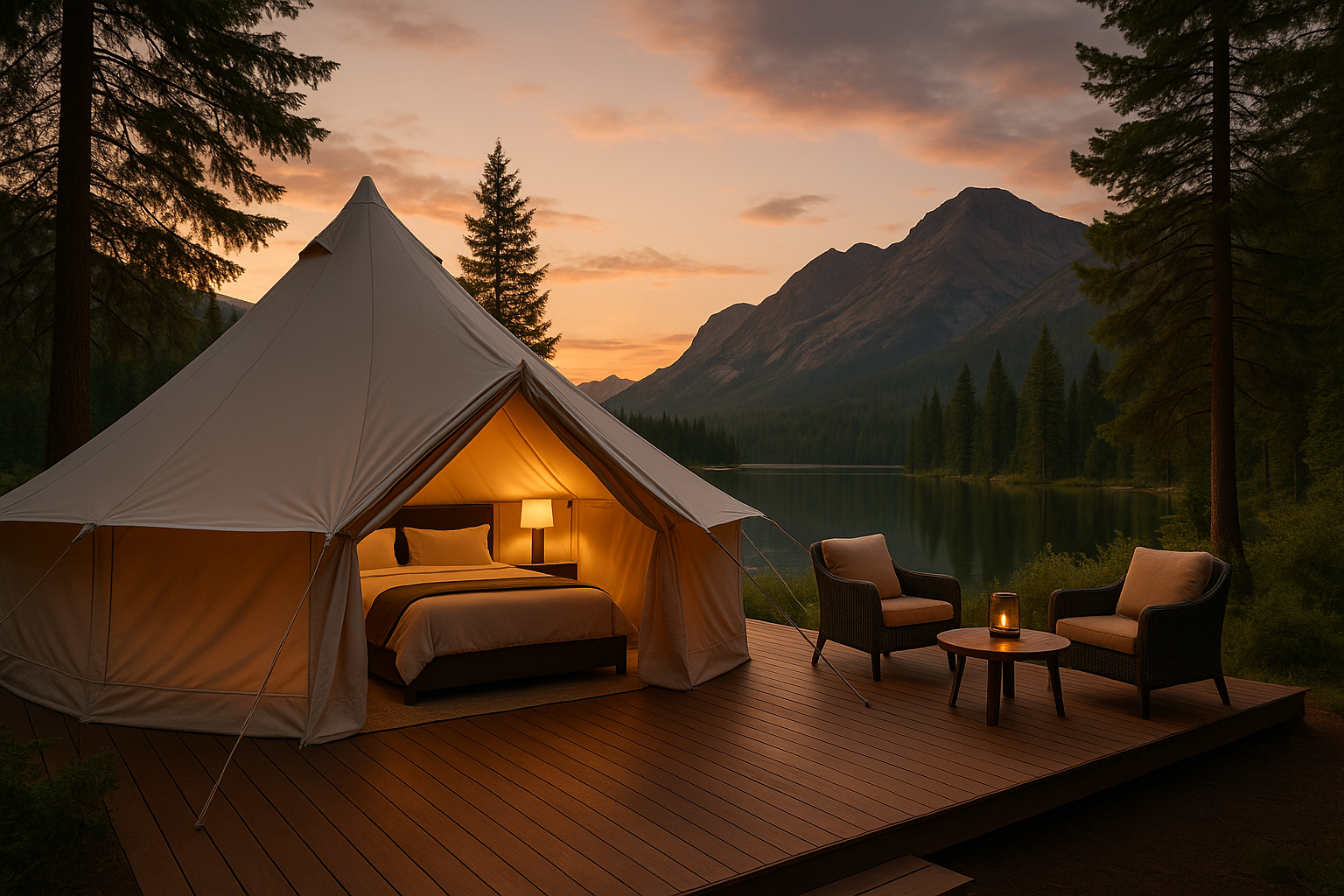The Evolution of Camping: From Traditional Wilderness to Modern Glamping
Camping has undergone a remarkable transformation over the decades, evolving from a basic outdoor activity focused on survival skills and roughing it in the wilderness to encompass luxurious experiences that blend the beauty of nature with comfort. This transition has created diverse options for outdoor enthusiasts with varying preferences. Today's camping landscape includes everything from traditional tent camping in remote backcountry locations to upscale glamping experiences featuring permanent structures with amenities rivaling those of boutique hotels.

Modern Glamping: The New Face of Outdoor Adventures
Glamping—a portmanteau of “glamorous” and “camping”—has redefined what it means to experience the outdoors. This trend combines the immersive natural experience of traditional camping with comforts typically associated with hotels or resorts. Modern glamping accommodations include safari tents, yurts, treehouses, tiny homes, and converted Airstreams, often equipped with proper beds, electricity, heating, and sometimes even air conditioning. These accommodations offer a gateway to nature for travelers who might otherwise avoid camping due to concerns about comfort, convenience, or safety.
The appeal of glamping lies in its ability to remove barriers to outdoor experiences. Instead of spending time setting up tents, building fires, and managing basic needs, glampers arrive at ready-made accommodations where they can immediately begin enjoying their natural surroundings. This accessibility has opened outdoor recreation to broader demographics, including families with young children, older adults, and those with physical limitations that might make traditional camping challenging.
The Advantages and Challenges of Glamping
Glamping offers numerous advantages over traditional camping, beginning with enhanced comfort. While traditional campers sleep on thin pads inside basic tents, glampers often enjoy queen-sized beds with high-quality linens. Many glamping sites include private bathrooms, hot showers, and climate control—amenities that eliminate common deterrents to outdoor recreation. This comfort extends to dining as well, with some premium glamping experiences offering on-site restaurants, pre-prepared meals, or fully equipped kitchens.
The social aspect of glamping represents another significant advantage. Many glamping resorts and destinations create community spaces where travelers can gather, share experiences, and socialize. These environments foster connections between guests while still providing private accommodations, creating a balanced experience that appeals to solo travelers, couples, and groups alike.
However, glamping is not without challenges. The primary criticism revolves around its environmental impact. While traditional camping emphasizes leave-no-trace principles and minimal resource consumption, some glamping operations require significant infrastructure, ongoing energy use, and regular maintenance. The development of permanent structures in natural areas can disrupt local ecosystems and wildlife if not carefully managed. Additionally, the higher price point of glamping creates accessibility concerns, potentially limiting these experiences to those with greater financial resources.
The Impact of Glamping on Travelers and the Industry
Glamping has significantly influenced traveler expectations and behaviors. The rise of social media has accelerated this trend, with photogenic glamping accommodations becoming Instagram favorites and driving awareness among new audiences. This visibility has created demand for unique, sharable experiences that combine outdoor adventure with photogenic settings and amenities.
For the outdoor hospitality industry, glamping represents both opportunity and adaptation. Traditional campgrounds increasingly add glamping options to their offerings, while new specialized glamping-only resorts continue to emerge. This diversification helps businesses attract different customer segments and extend their operating seasons, as many glamping accommodations can comfortably host guests during cooler months when traditional camping might be less appealing.
The economic impact extends beyond accommodation providers to local communities as well. Glamping destinations typically attract visitors with higher discretionary spending, benefiting nearby restaurants, shops, and activity providers. Many glamping operators intentionally showcase local products, from regionally sourced food to handcrafted furniture and artwork, creating economic ripple effects throughout the community.
Sustainable Practices in Modern Camping
Both traditional camping and glamping operations increasingly emphasize sustainability in their operations. Many glamping providers now incorporate eco-friendly design principles, including solar power, rainwater collection, composting toilets, and minimal-impact construction techniques. These practices help address criticism about environmental impact while appealing to increasingly eco-conscious travelers.
The sustainability focus extends to guest education as well. Many camping and glamping experiences now include conservation components, teaching visitors about local ecosystems, wildlife protection, and responsible recreation practices. This educational aspect creates lasting value beyond the immediate experience, potentially influencing visitor behaviors long after their stay concludes.
The Future of Outdoor Accommodations
The camping industry continues to evolve, with emerging trends suggesting further diversification in outdoor accommodations. Technological integration represents one significant development, with some providers incorporating smart features like app-controlled heating, lighting, and even augmented reality experiences that provide information about surrounding nature. Work-friendly amenities have also gained importance, with reliable Wi-Fi and dedicated workspaces becoming common as remote work enables longer stays in outdoor settings.
The boundaries between traditional hospitality and camping continue to blur, with hotel brands entering the glamping market and camping providers adopting hospitality best practices. This convergence creates hybrid experiences that combine elements from multiple accommodation categories, further expanding options for travelers seeking outdoor connections without sacrificing comfort or convenience.
As camping in all its forms continues to evolve, the core appeal remains consistent: creating meaningful connections with natural environments, whether through the self-reliance of traditional camping or the comfort-enhanced immersion of glamping. Both approaches offer valuable pathways to experiencing the restorative benefits of time spent in nature, ensuring that outdoor recreation remains relevant and accessible across changing traveler preferences and expectations.






